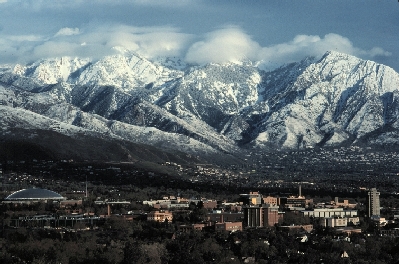 |
Mountain Meteorology |
 |
Mountain Meteorology |

Philosophy and Objectives: The influence of the earth's orography upon weather and climate is the focus of Mountain Meteorology 5550/6550. The course builds upon concepts taught in the upper division undergraduate courses in Meteorology. However, seniors and graduate students from other science and engineering departments with course work in fluids may be able to take the course with the instructors' consent.
The course focusses on weather processes that are modulated strongly by topography. Roughly the first half of the course emphasizes how the earth's surface radiatively, thermally, and dynamically adjusts the atmospheric boundary layer in the absence of precipitation. The second half of the course emphasizes how orography modifies cyclogenesis, produces orographically trapped disturbances (e.g., marine surges, cold-air surges and cold-air damming), and affects the organization, distribution, and amount of orographic precipitation. Applications of mountain meteorology to air quality, fire weather, avalanches, and winter road maintenance will be presented in guest lectures.
Lectures will be supplemented by computer-based laboratory assignments and a field experiment (tentatively scheduled for Saturday, September 22nd or 29th, weather permitting) on mountain valley wind circulations. Field-program data collected during the Intermountain Precipitation Experiment (IPEX) will be used to examine issues related to cyclone evolution in complex terrain, topographic blocking, barrier jets, and orographic precipitation enhancement.
Format: Lecture - 2 classes per week (10:45-12:05 TTh), with occaisional field projects and guest lectures. Classes meet in the Meteorology Computation and Visualization Lab (490 INSCC).
Grading: Grades will based upon class participation, laboratory assignments, and literature reviews (40%), analysis and write-up of the results of the field experiment (20%), a mid-term quiz (20%), and final quiz (20%) which is not comprehensive.
Text: None. Reading assignments from scientific liturature assigned as necessary.
Additional Information:

Lectures
Assignments
 Updated August 23, 2001
Updated August 23, 2001